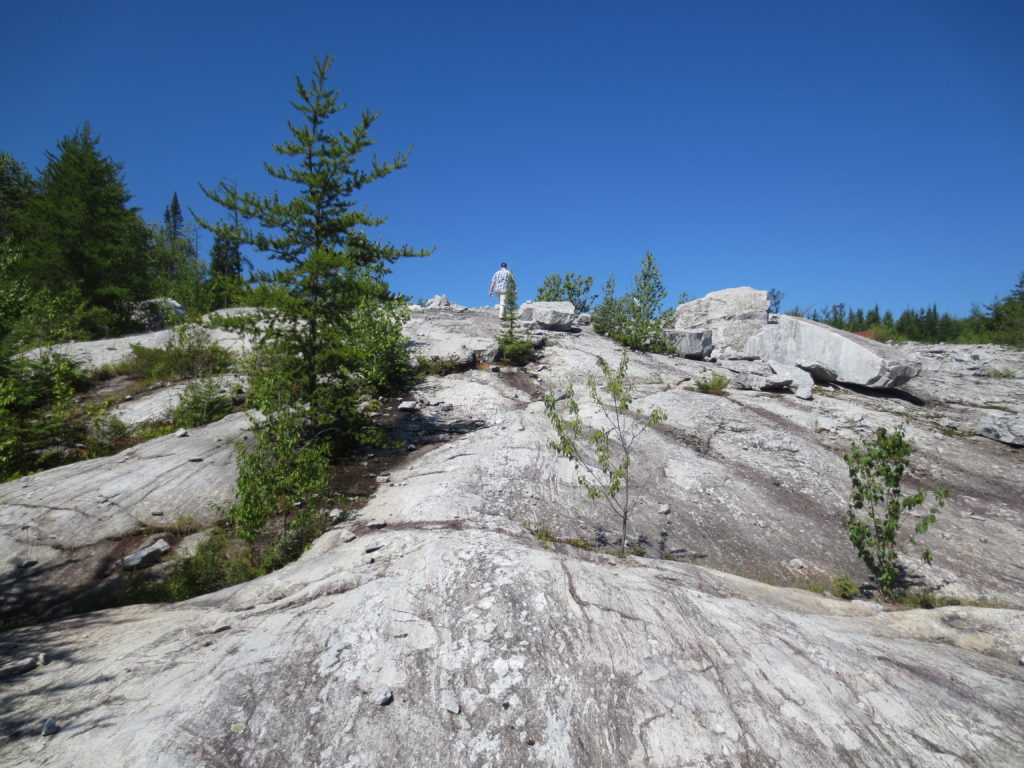Originally published on the M.Plan International Limited website on March 16, 2020.
In general, mi neral resource estimates for specialty minerals such as quartz, kaolin, diatomite, graphite and limestone, etc. are both similar to and very different from traditional base and precious metal estimates. They are similar in that both types of estimates have to be based on rigorous Quality Assurance and Quality Control programs beginning at the exploration stage. However, in the case of specialty minerals not only is the metallurgical recovery important but the physical quality of the material, such as colour, particle size and shape, and potentially deleterious elements affecting the final application under investigation is an equally important factor to determine the quality of the end product and potential market value.
neral resource estimates for specialty minerals such as quartz, kaolin, diatomite, graphite and limestone, etc. are both similar to and very different from traditional base and precious metal estimates. They are similar in that both types of estimates have to be based on rigorous Quality Assurance and Quality Control programs beginning at the exploration stage. However, in the case of specialty minerals not only is the metallurgical recovery important but the physical quality of the material, such as colour, particle size and shape, and potentially deleterious elements affecting the final application under investigation is an equally important factor to determine the quality of the end product and potential market value.
To determine the quality parameters of the payable mineral (e.g. flake graphite or kaolin) in the deposit, samples need to be processed into a mineral concentrate or even to a chemical product in order to test the quality and compare it with market specifications.
When conducting a mineral resource estimate on a specialty mineral the potential applications, market size and market conditions are also a major factor to consider. In a number of cases, the specialty market for certain minerals is dominated by as few as two or three major companies. Those specialty mineral end use markets which are controlled by private companies are the most difficult to conduct mineral resource estimates on since the information necessary to determine if the mineral is potentially economic or not is very rarely available to the public.
Unlike traditional base or precious metal mineral resource estimates, where there are markets of last resort like the London Metal Exchange (LME), there is no terminal market for the specialty minerals. In some cases the demand is such that one or two mines can supply the world’s needs. As well, applications and specifications are often developed on a business to business basis, between producer and end-user, resulting in opaque markets with limited details.
There are also cases where certain countries dominate the market for certain specialty minerals (e.g. rare earths and high purity quartz). Due to the regional economic advantages or specialized deposits these countries may benefit regarding production costs and/or market share. Consequently, there may be little economic incentive to produce them in other parts of the world. Some otherwise world class mineral deposits for these specialty minerals have been rendered uneconomic at present.
Therefore, the following factors need to be considered when conducting a mineral resource estimate for specialty minerals:
- Grade or purity of the mineral usually expressed as a percentage.
- Physical properties of the mineral or products such as particle size and shape, brightness, surface properties and strength.
- Distribution and overall extent of any deleterious elements which may affect the quality of the material.
The grade or purity of the mineral is important in determining the economic nature of a mineral deposits. Low grade or low purity material may only be fit for a local bulk market with limited access to more distant markets. However, the higher-grade or high purity material could demand a premium in the market and allow it to be sold into more specialized markets.
Another important difference regarding mineral resource estimates for specialty minerals is that often it is possible to see the general continuity of the mineral deposit without much effort. This has led some to believe that since you can readily see the continuity of the quartz, kaolin, diatomite, graphite or limestone mineralization is apparent that wide-spaced drilling and lower exploration expenditures are reasonable. This is, however, incorrect. While there may be less drilling than for traditional base or precious minerals exploration programs, the quality of the specialty mineral deposit needs to be determined and any variability affecting its potential economics within the deposit understood.
Purity, physical properties and distribution of any deleterious elements are key criteria to consider when conducting a mineral resource estimate and not necessarily the continuity of the deposit itself. For instance, the specialty mineral under consideration may be continuous over a large extent but may be rendered uneconomic because the physical properties of the deposit or the distribution of the deleterious elements within the deposit.
In addition, identifying the variability of such criteria within the deposit is also important. It will not only allow for a better understanding of the economic nature of the overall deposit but will allow a mining engineer to maximize the mining and extraction of the mineralization.
Therefore, reducing the exploration budget because the continuity of the deposit is not in question may materially impact the quality resource estimate and therefore the project. While the demonstration of the continuity of the mineralization is important in the traditionally mined minerals, when it comes to specialty minerals, it is the physical properties and the extent of the deleterious elements within the deposit that are more important in determining the true economic nature of a deposit. Grade, physical properties and extent of the deleterious elements are all key to conducting a good mineral resource estimate for specialty minerals.
For more information regarding Specialty Mineral Resource Estimates, please contact William Lewis via the ‘Contact Us‘ page on this website or David Anonychuk via M.Plan’s website.
.
.
.
.
.
.
0 Comments